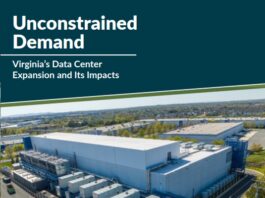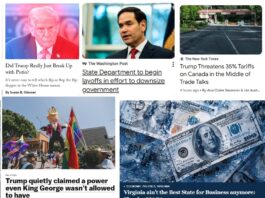This spring Dominion Virginia Power unveiled a proposal to buy 3 megawatts (MW) worth of power from its customers who have solar panels, and resell the electricity to its Green Power Program through renewable energy certificates (RECs). It represents a very small amount of electricity–a mere rounding error for the utility giant–but its implications are much bigger, and they have the solar industry concerned.
Most homeowners and businesses that put up solar panels currently “net meter,” paying the utility only for power in excess of what their systems generate. Owners of solar systems also earn RECs that they can sell to help offset the cost of the system if they choose. RECs represent the “environmental attributes” of renewable energy, allowing the market to buy and sell what amounts to the bragging rights to renewable energy even when the actual electrons can’t be delivered.
Dominion presents its “Solar Purchase Tariff” as a way to meet customer demand for Virginia-made renewable energy and incentivize new solar installations. The good news is that it creates publicity for solar, so it might stimulate interest. The bad news is that the devil is in the details, and there are a lot of details.
Under the proposal, some homeowners and businesses that qualify to net-meter could instead enter a “buy-all, sell-all” contract. Dominion would buy their entire output and its associated RECs at 15 cents per kilowatt-hour (kWh), and sell them power from the grid at the normal retail price of about 11 cents/kWh. Solar system owners would pocket the 4-cent difference.
We’ll get back to the solar owners in a moment, but for now let’s follow the money: Dominion would turn around and sell the RECs to its Green Power Program, not for that 4-cent difference in price, but for 11 cents/kWh.
The Green Power Program is a voluntary program under which Dominion customers who want to do so can pay more for their electricity to support renewable energy. Over 14,000 Virginians participate through added payments on their electric bills. The program uses the money to buy RECs, which currently come mostly from Midwestern wind farms and landfill gas.
Why would the Green Power Program be so stupid as to pay 11 cents for something that cost Dominion only 4 cents? Well, because Dominion controls the program. Dominion assures us it won’t raise the cost of participating in the Green Power Program as a result, but that’s only because the power produced by 3 MW is just a drop in the program’s bucket, and the rest of the RECs it is buying are extremely cheap in today’s market.
This may not always be true, though. As a precedent for future buys of distributed generation, charging participants 11 cents for a product that nets the producer only 4 cents sounds like a great way to drive away participants.
There is also the question of whether Green Power customers want their money spent subsidizing solar panels on other people’s houses, rather than helping build Virginia wind farms or solar installations that put new clean energy on the grid. Paying extra on my bill for some rich guy’s solar panels makes me feel like a chump, but others may not mind.
But let’s get back to the money. If Dominion is charging the Green Power Program 11 cents of the 15-cent solar purchase price, that leaves 4 cents that Dominion itself will pay for customer-generated solar power, even while it charges the same customers about 11 cents for ordinary “brown” power. Dominion says this is because solar power, when reduced to electrons like any other, is worth only what the company would otherwise pay for electricity on the open market (the “avoided cost”), and that’s about 4 cents.
The solar industry disputes the claim that distributed solar generation is worth no more than the avoided cost of brown power, and considers it a dangerous precedent with ramifications for future battles, including over standby charges. Distributed generation has a high value to the electric grid, they contend, adding stability and reducing the need for new transmission lines. Moreover, solar panels can reduce peak demand on hot, sunny days, and they do so without adding pollution. Valuing solar energy at the same rate as brown power bought off the grid just has to be wrong, and the only question is how wrong.
So although the Solar Purchase Program is so small that it seems hardly worth all the ink being spilled on it, it appears to be a proxy for a much bigger battle. And this may be the real point, because otherwise the program could prove irrelevant. Solar industry members say the 15-cent price is too low to induce people to install solar. Sure, it’s more than the 11 cents saved by net-metering, but many homeowners are already selling their RECs for anywhere from 2 to 20 cents/kWh. Other details of the program-an interconnection fee, a monthly charge for a second meter, and doubts about whether the payments might be taxable-will make most solar customers opt to stick with net-metering and either continue selling their RECs elsewhere or keep those bragging rights for themselves.
Oddly, this spring Dominion, through a broker, started offering 4 cents/kWh to net-metering customers for their solar RECs, outright, with no strings attached. Homeowners were told the RECs will be sold to the Green Power Program. Although it was framed as a one-time buy, this is obviously a much better deal for the solar owners than the proposed Solar Purchase Program. And assuming Dominion doesn’t plan to make a profit on the resale of the RECs to the Green Power Program, it is also hugely better for those customers.
All this suggests that Dominion may not even expect any net metering customers to sign up for the Solar Purchase Program. This proposed program may just be part of the bigger power game, in which control over electric generation is the real point.



